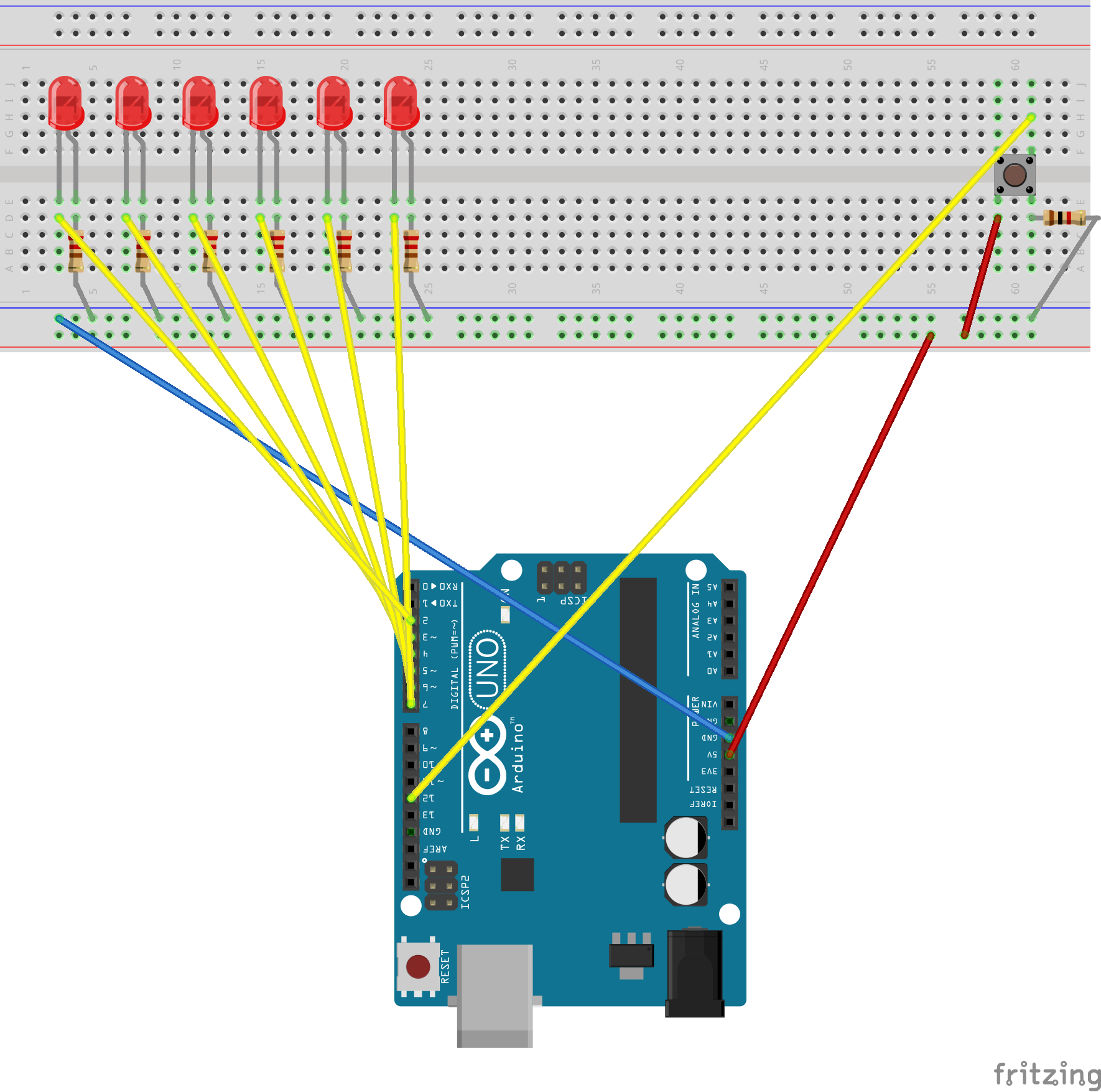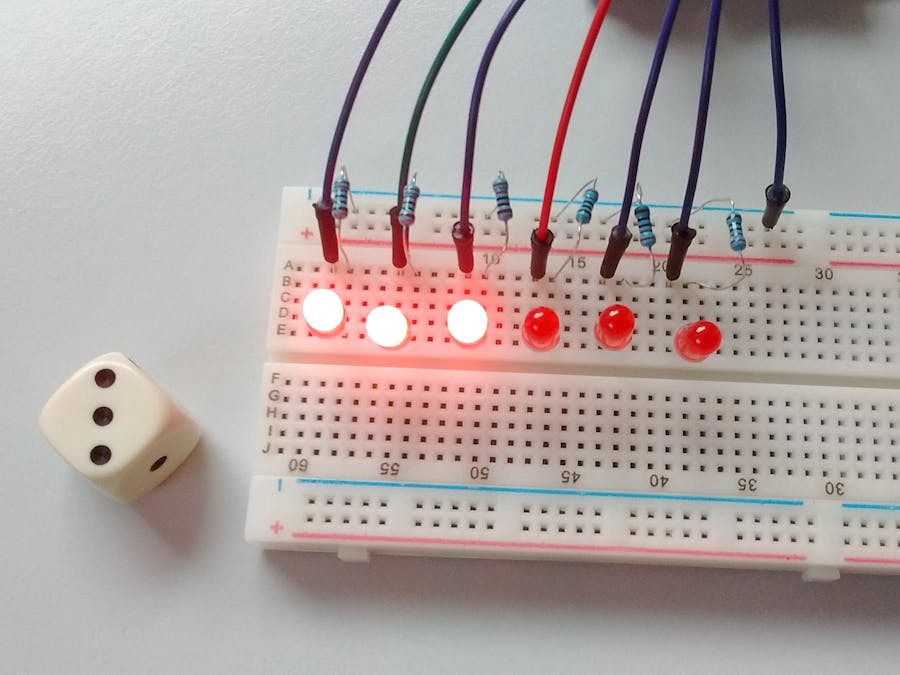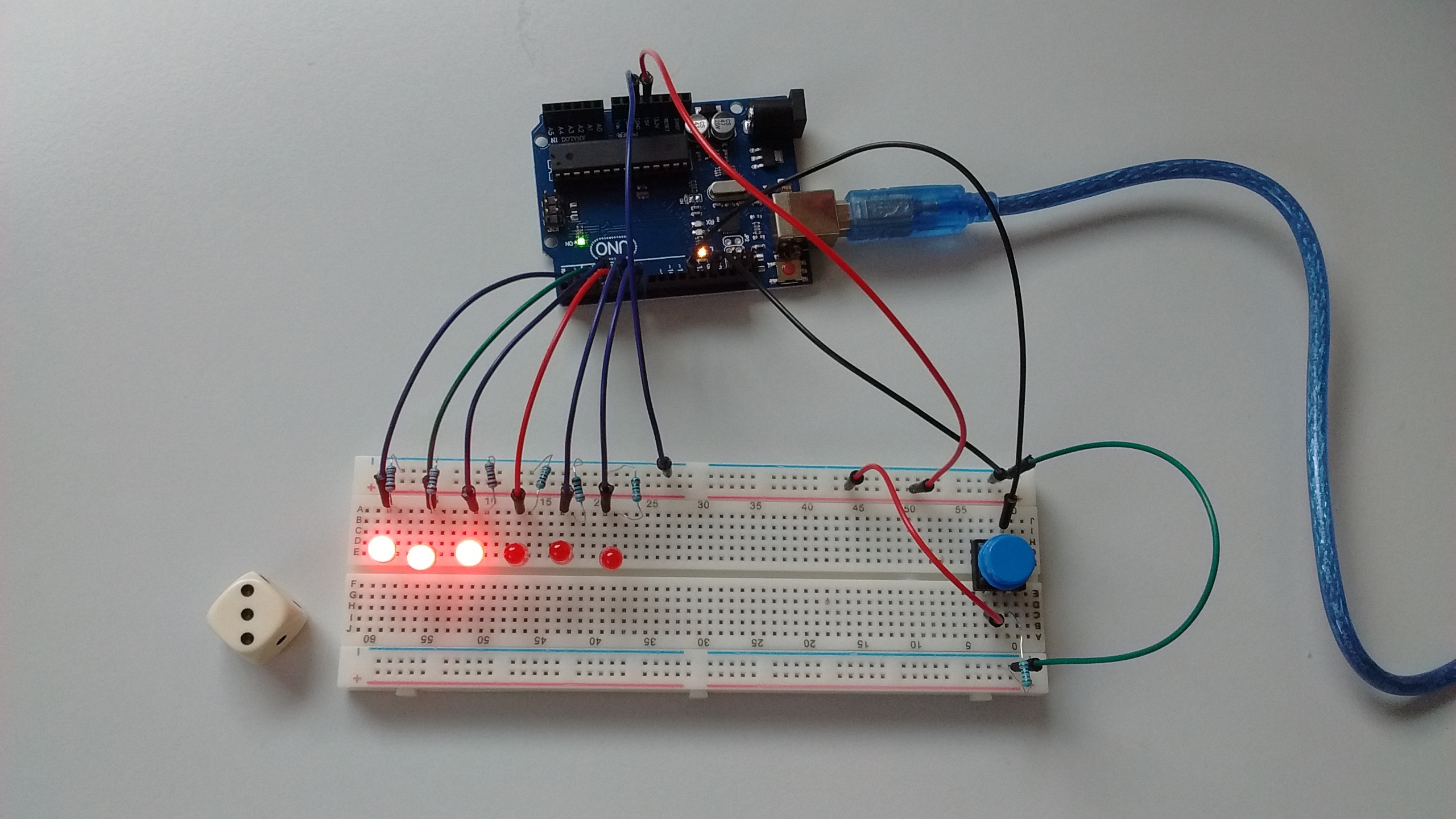Hardware components | ||||||
_ztBMuBhMHo.jpg?auto=compress%2Cformat&w=48&h=48&fit=fill&bg=ffffff) |
| × | 1 | |||
 |
| × | 6 | |||
 |
| × | 1 | |||
 |
| × | 1 | |||
 |
| × | 1 | |||
 |
| × | 6 | |||
I made a dice throwing prototype: if you press the button, a random number between 1 and 6 is generated and the corresponding number of LEDs are lit up. This was a holiday project with my kids :)
Dice throwing prototype using Arduino UNO, a button switch and 6 LEDs.
Circuit schematic
This is the schematic circuit made with Fritzing for the dice prototype.
The circuit:
* 6 LEDs attached to consecutive digital pins (with 220 Ohm resistors)
* Button switch connected to digital pin (see circuit on https://www.arduino.cc/en/Tutorial/Button)
The circuit:
* 6 LEDs attached to consecutive digital pins (with 220 Ohm resistors)
* Button switch connected to digital pin (see circuit on https://www.arduino.cc/en/Tutorial/Button)

Dice
ArduinoWith this code you can simulate throwing a dice, the number of LEDs lighting up is the number on the thrown dice.
/*
Arduino Dice :)
This example shows how to simulate throwing a dice with 6 LEDs.
The circuit:
* 6 LEDs attached to consecutive digital pins (with 220 Ohm resistors)
* Button switch connected to digital pin (see circuit on https://www.arduino.cc/en/Tutorial/Button)
Created 5 Jan 2017
By Esther van der Stappen
This example code is in the public domain.
*/
// set to 1 if we're debugging
#define DEBUG 0
// 6 consecutive digital pins for the LEDs
int first = 2;
int second = 3;
int third = 4;
int fourth = 5;
int fifth = 6;
int sixth = 7;
// pin for the button switch
int button = 12;
// value to check state of button switch
int pressed = 0;
void setup() {
// set all LED pins to OUTPUT
for (int i=first; i<=sixth; i++) {
pinMode(i, OUTPUT);
}
// set buttin pin to INPUT
pinMode(button, INPUT);
// initialize random seed by noise from analog pin 0 (should be unconnected)
randomSeed(analogRead(0));
// if we're debugging, connect to serial
#ifdef DEBUG
Serial.begin(9600);
#endif
}
void buildUpTension() {
// light LEDs from left to right and back to build up tension
// while waiting for the dice to be thrown
// left to right
for (int i=first; i<=sixth; i++) {
if (i!=first) {
digitalWrite(i-1, LOW);
}
digitalWrite(i, HIGH);
delay(100);
}
// right to left
for (int i=sixth; i>=first; i--) {
if (i!=sixth) {
digitalWrite(i+1, LOW);
}
digitalWrite(i, HIGH);
delay(100);
}
}
void showNumber(int number) {
digitalWrite(first, HIGH);
if (number >= 2) {
digitalWrite(second, HIGH);
}
if (number >= 3) {
digitalWrite(third, HIGH);
}
if (number >= 4) {
digitalWrite(fourth, HIGH);
}
if (number >= 5) {
digitalWrite(fifth, HIGH);
}
if (number == 6) {
digitalWrite(sixth, HIGH);
}
}
int throwDice() {
// get a random number in the range [1,6]
int randNumber = random(1,7);
#ifdef DEBUG
Serial.println(randNumber);
#endif
return randNumber;
}
void setAllLEDs(int value) {
for (int i=first; i<=sixth; i++) {
digitalWrite(i, value);
}
}
void loop() {
// if button is pressed - throw the dice
pressed = digitalRead(button);
if (pressed == HIGH) {
// remove previous number
setAllLEDs(LOW);
buildUpTension();
int thrownNumber = throwDice();
showNumber(thrownNumber);
}
}







_3u05Tpwasz.png?auto=compress%2Cformat&w=40&h=40&fit=fillmax&bg=fff&dpr=2)
Comments